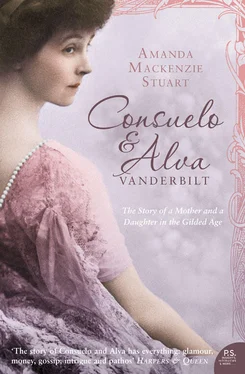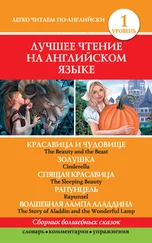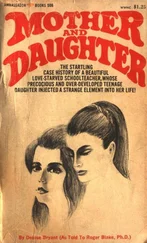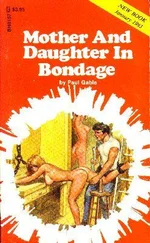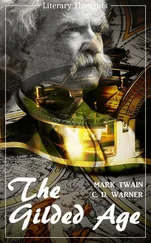Inside the church, official entertainment began with an organ recital from Dr George Warren, as sixty members of Walter Damrosch’s Symphony Orchestra moved into their desks. From 11 a.m., the orchestra played through a musical equivalent of the floral display in a programme at which even commercial classical radio stations might now baulk: the Prize Song from Wagner’s Die Meistersingers ; the Bridal Chorus from Lohengrin ; Beethoven’s Leonore Overture No. 3; Tchaikovsky’s Andante Cantabile String Quartet; the Grand March from Wagner’s Tannhauser ; Fugue in G Minor by Bach; and the Overture to A Mid-Summer Night’s Dream by Mendelssohn, all in the space of fifty-five minutes. Fifty members of the choir took their seats in the choir stalls, together with four distinguished New York soloists, and the guests of honour began to appear.
Mrs Astor arrived first with Mr and Mrs John Jacob. She was escorted to her seat by Reginald Ronald and looked particularly splendid in a costume of grey completed by a velvet coat and a black toque with white satin rosettes. Mrs William Jay, close friend of Mrs Vanderbilt, followed closely behind with Colonel Jay, wearing one of the most ‘effective’ costumes of the wedding – a heavy black silk skirt, cut very full and with a bodice of yellow and crimson satin. A peal of church bells announced the arrival of the mother-of-the-bride, Alva Vanderbilt, with the bridesmaids. Miss Duer, Miss Morton, Miss Winthrop, Miss Burden, Miss Jay, Miss Goelet and Miss Bronson were ‘all exceedingly pretty young women’ gushed the reporter in charge of bridesmaids for The New York Times. 9 They wore gowns of ivory satin, with magnificent broad-brimmed velvet hats, topped with ostrich feathers, and around-the-throat bands of blue velvet with over-strings of pearls. All heads swivelled as Mrs Vanderbilt came up the aisle, accompanied by the bride’s brothers, Willie K. Jr and Harold. She was wearing a gown of pale blue satin edged with sable, a hat of lace and silver with a pale blue aigrette, and had ‘a decided look of satisfaction on her face’. 10
Alva Vanderbilt’s smug expression was not to last. Her arrival signalled the imminent appearance of the bride, escorted by her father, William K. Vanderbilt. A row of fashionable bishops appeared from the vestry room and took their places in the chancel. The Duke of Marlborough, who had slipped into St Thomas Church unnoticed with his best man, Ivor Guest, took up his position and waited, incidentally giving the wedding guests a good opportunity to stare at him instead. One of them told a newspaper that ‘some of the guests partially rose in their seats to have a better view of the Lord of Blenheim. Some were asking where his relatives were and others answered that they were represented by the British Embassy.’ 11 This was true – the groom’s side was represented by the British ambassador, supported by two gentlemen from the embassy in Washington, Bax Ironsides and Lord Westmeath.
Along the New York streets and in St Thomas Church they waited. The ushers sauntered up to their stations, three on one side of the central aisle and three on the other – then sauntered back to the church porch again. Mr Damrosch, who had completed his concert programme, beat time with his baton in silence, his head turned round towards the church door. The Duke of Marlborough began to fidget nervously, and only regained some of his composure when he noted the English sang-froid of his best man. As the delay lengthened, the guests shuffled and whispered. Alva was observed looking uncharacteristically worried. And then decidedly strained. Five minutes passed … then ten … then twenty … and still the bride had not appeared.
PART ONE
1 The family of the bride
AS THE DELAY LENGTHENED and nervousness grew, self-appointed society experts in the crowd had time to debate one important question: had anyone seen the Vanderbilt family, whose apotheosis this was alleged to be? There could be no dispute that Vanderbilt gold was a powerful chemical element at work in St Thomas Church on 6 November 1895. It had given the bride her singular aura; it had drawn a duke from England; and without it, Alva would not now be waiting anxiously for her daughter to arrive. Scintillae of Vanderbilt gold dust brushed everything on the morning of Consuelo’s wedding, from the fronds of asparagus fern to the glinting lorgnettes in the crowd outside. It was remarkable, therefore, that apart from the father-of-the-bride, its chief purveyors should be so conspicuously absent; and even more striking that this scarcely mattered because of the force of character of the bride’s Vanderbilt great-grandfather, whose ancestral shade still hovered over the players in the morning’s drama as if he were alive.
Cornelius Vanderbilt, founder of the House of Vanderbilt, lingered in the collective memory partly because he laid down the basis of the family’s extraordinary wealth; and partly because of the robust manner in which he did it. He died in 1877, a few weeks before Consuelo was born, but he left a complex legacy and no examination of the lives of Alva and Consuelo is complete without first exploring it.
Fable attached itself to Cornelius Vanderbilt, known as ‘Commodore’ Vanderbilt, Head of the House of Vanderbilt, even in his lifetime. He generally did little to discourage this, but one misconception that irritated him was that the Vanderbilts were a ‘new’ family and he embarked on genealogical research to prove his point. However, he held matters up for several years by placing an advertisement in a Dutch newspaper in 1868 which read: ‘Where and who are the Dutch relations of the Vanderbilts?’, causing such offence that none of the Dutch relations could bring themselves to reply. 1
More tactful experts later traced the Vanderbilts’ roots back to one Jan Aertson from the Bild in Holland who arrived in America around 1650. A lowly member of the social hierarchy exported by the Dutch West India Company, Jan Aertson Van Der Bilt worked as an indentured servant to pay for his passage and then acquired a bowerie or small farm in Flatbush, Long Island. His descendants traded land from Algonquin Indians on Staten Island, starting a long association between the Vanderbilts and the Staten Island community of New Dorp. They also joined the Protestant Moravian sect, whose members fled from persecution in Europe in the early-eighteenth century and settled nearby. The Vanderbilt family mausoleum is to be found at the peaceful and beautiful Moravian cemetery at New Dorp on Staten Island to this day. 2
In a development that goes against the grain of immigration success stories, the Vanderbilt family arrived in America early enough to suffer a downturn in its fortunes in the mid-eighteenth century. Just at the point when the Staten Island farm became prosperous, it was repeatedly sub-divided by inheritance and by the time the Commodore was born in 1794, his father was scratching a subsistence living on a small plot, and ferrying vegetables to market on a periauger , a flat-bottomed sailing boat evolved from the Dutch canal scow. Historians of the family portray this Vanderbilt of pre-history as feckless and inclined to impractical schemes, but he compensated for his deficiencies by marrying a strong-minded, hard-working, frugal wife of English descent, Phebe Hands. Her family had also been ruined, by a disastrous investment in Continental bonds. They had nine children. The Commodore was their eldest son.
Circumstances thus conspired to provide the Commodore with what are now known to be many of the most common characteristics in the background of a great entrepreneur: a weak father and a ‘frontier mother’; a marked dislike of formal education (he hated school and spelt ‘according to common sense’); and a humble background. 3 A humble background is almost mandatory in nineteenth-century American myth-making about the virtuous self-made man, but it was a characteristic the Commodore genuinely shared with others such as John Jacob Astor, Alexander T. Stewart and Jay Gould. After his death the Commodore was accused of being phrenologically challenged with a ‘bump of acquisitiveness’ in a ‘chronic state of inflammation all the time’, but he was not alone in finding that childhood poverty and near illiteracy ignited a very fierce flame. 4 More unusually for a great entrepreneur, the Commodore was neither small nor puny. He developed enormous physical strength, accompanied by strong-boned good looks, a notorious set of flying fists and a streak of rabid competitiveness. Charismatic vigour, combined with a lurking potential for violence, made him a force to be reckoned with from an early age and even as a youth he developed a reputation for epic profanity and colourful aggression that never left him.
Читать дальше
